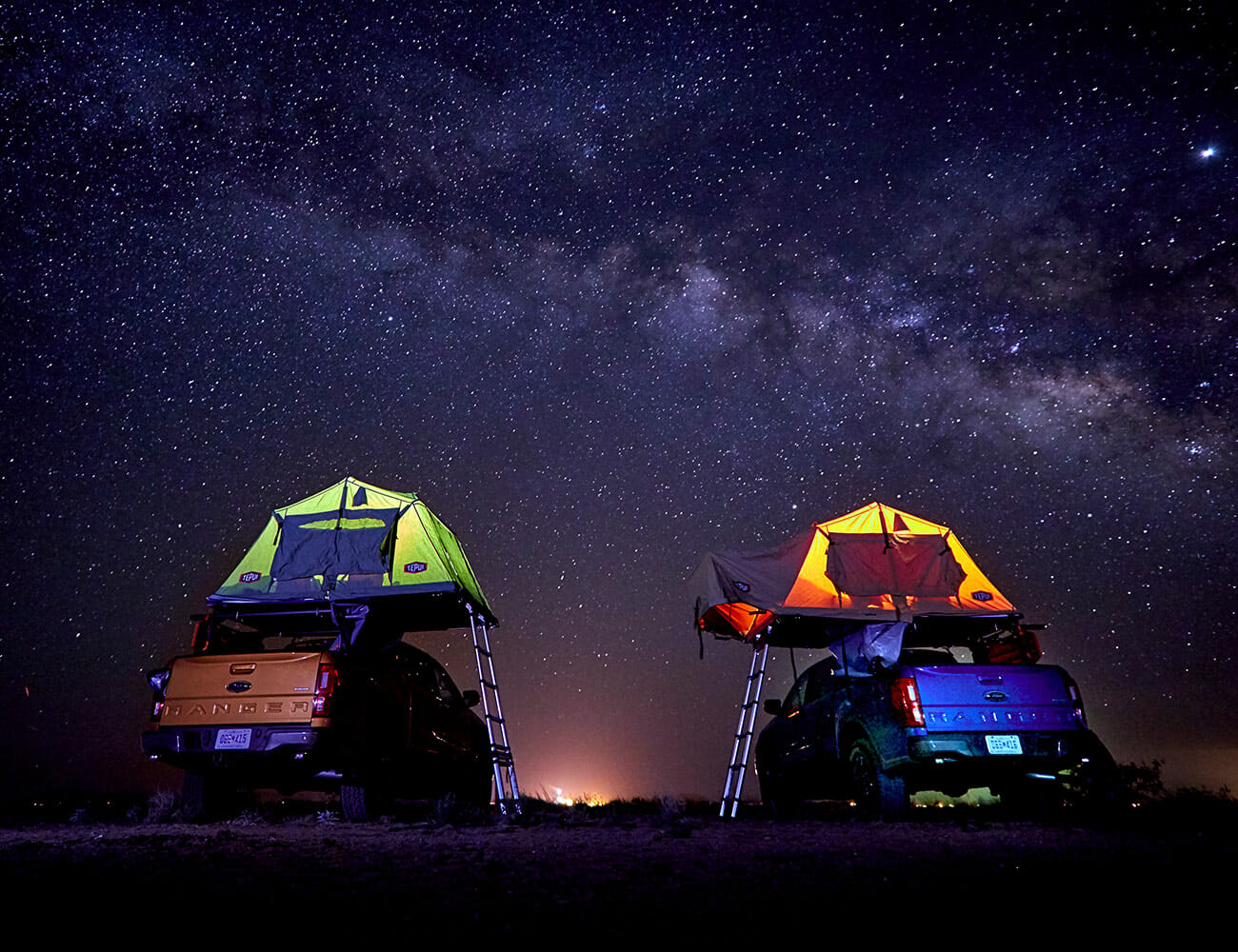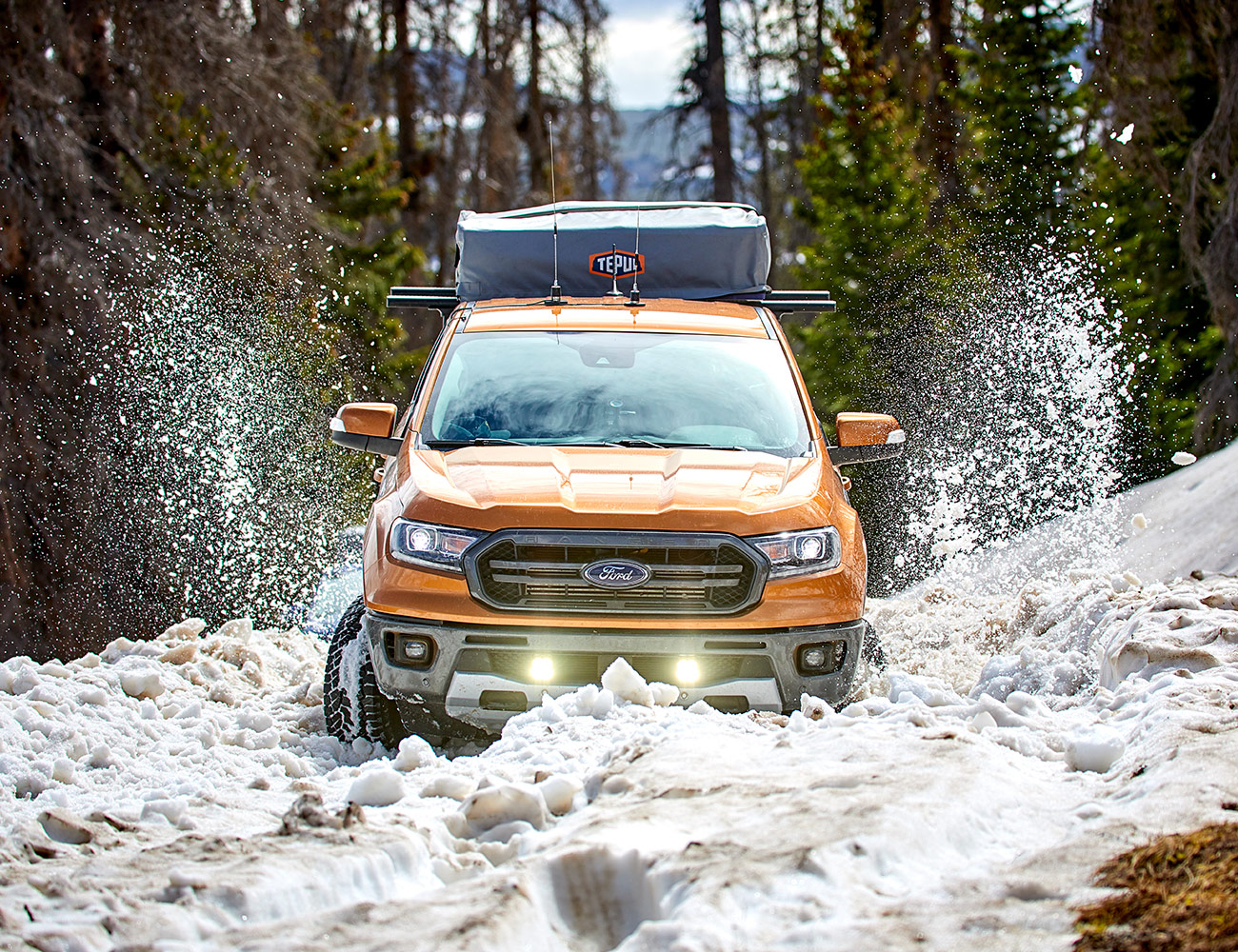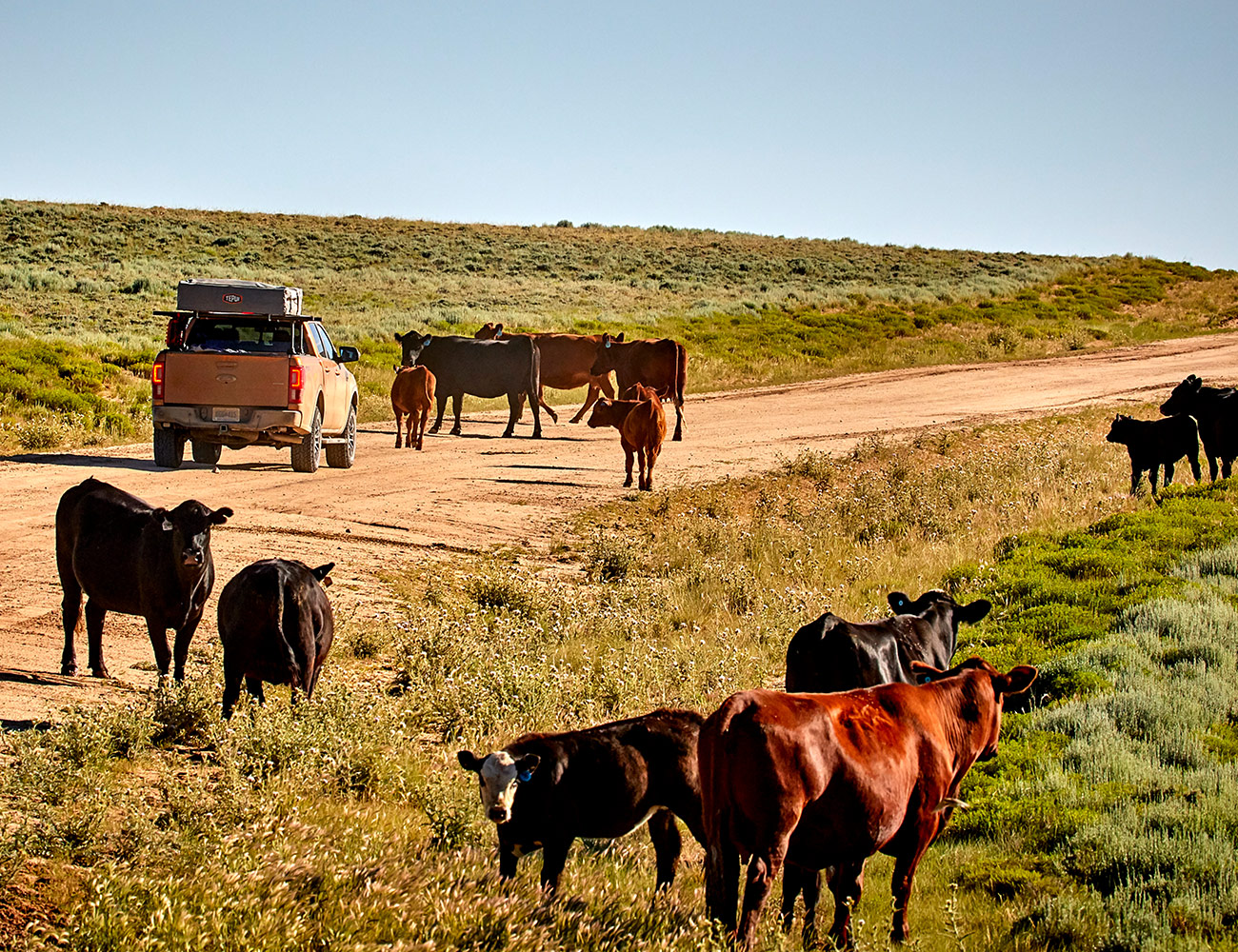Going on an overland adventure across the United States is easier than most people think. Stock four-wheel-drive vehicles are more capable than ever; GPS tracks and maps are available online; automotive roof tents make the nights more comfortable than ever. It makes it so easy, you might even think about taking your whole family along as you attempt a 3,500-mile trip along the Continental Divide from Mexico to Canada would not only check it off your bucket list. Which is exactly what photographer Olivier de Vaulx did.
The Milky Way seems so close it’s almost unreal. Even the most advanced computer-generated images couldn’t approach the complexity of the starry night above our heads.
We’re in New Mexico, on the first night of our Continental Divide journey, laying down on the comfortable mattress of our roof tents and enjoying a show that no movie theater will ever be able to provide. It’s only been a few hours since we started at the border between the U.S. and Mexico at the Antelope Wells port of entry, but we already feel thousand of miles away from our real lives.
My two teenagers didn’t get any cell service the whole day and never complained. Instead, they drove our two Ford Ranger FX4 pickup trucks through the red dirt of New Mexico’s backcountry, which is more fun than any video game. As the day ended, the adventure already felt like a success. But there were still 3,500 miles to go.
Warming Up in New Mexico
Kevin Glassett, avid motorcyclist and retired Hewlett-Packard engineer, put together a daily driving route for our GPS, with paved and off-road options displayed in different colors on our Trail Tech Voyager Pro. The little arrow proves hypnotic; with no risk of getting lost, we tend to drive as much as we can. (Furthermore, since the temperature outside is well above 85 degrees, nobody minds seating in an air-conditioned vehicle.)
The EcoBoost engines of the two Rangers are sipping fuel as slowly as old British lords sip their tea, giving us enough range to travel more than 250 miles a day. The power delivered by the turbos and the smooth ride provided by the FX4 heavy-duty suspensions sometimes even pushes us to switch into rally mode, speeding across the red dirt like professional WRC racers. But being here as a family instead of with a bunch of friends reminds you quickly that overlanding is more about the distance traveled than the adrenaline rush, and we quickly fall back to a more reasonable pace. (Even if the truck didn’t mind going fast.)
As the sun sets, it’s time to start what will become our daily routine: Finding a free camping spot for the night on BLM land, setting up our Tepui Explorer Kukenam and Autana roof tents and cooking some easy-but-healthy meals. Using two plastic coolers and a gas stove, we whip up recipes with enough proteins, carbs and veggies to call this trip a gastronomic experience. GSI Outdoors cooking kits help us keep everything organized for dinner and breakfast, transforming what would be a duty in the army into a genuine pleasure. Once the dishes are washed (using melted ice from the cooler instead of wasting drinkable water), it’s time for a card game or some night photography of the Milky Way. Hello, vacation mode.

Catching Cold in Colorado
The transition between New Mexico and Colorado is somewhat brutal. The elevation rises as we reach the Golden State, and with five times more snow this winter than in previous years, most of the passes in the Rocky Mountains are still closed — as we discover first hand while trying to go over Stunner Pass, just to find a big patch of snow at the summit.
While the first two patches of snow take us only a few attempts to go through, thanks to the high clearance of the Ranger FX4s and the help of the Maxtrax MKII traction mats, the last one proves more difficult. Stuck in the snow, the first Ranger stalls, high-centered and unable to free itself. That’s why we travel with two trucks: The second Ford is able to pull out the unlucky vehicle loose in no time.
The snow being deep as it is, we could have decided to go around by (illegally) driving off the trail. Instead, we keep the overland attitude alive and start digging a path through the snow with a shovel, the whole family taking relays to clear the way. (Turns out overlanding can be a great workout.) After a few hours, we finally make it to the other side…just in time to be welcomed by a hail storm. Colorado is a tough place.
Thankfully, there’s also plenty of sweet opportunities in the state: Hiking and sledding along the snowy summits of Cinnamon Pass, the discovery of old gold mines, paddleboarding sessions in the crystal-clear lakes and watching wildlife such as deer, squirrels, foxes, marmots, moose and bears.

Going Back in Time in Wyoming
The border between states once again brings a huge geographic change. The high mountains are still in the distance, but we now drive on easy trails in the plains. Using our GPS’ ability to show the position of the other vehicle on their screens, the two trucks follow each other at a safe distance, so the second can avoid being blinded by the thick dust raised by the first crew. The long-range Midland MXT115 MicroMobile radios make chatting easy regardless of the distance, helping prevent collisions with upcoming traffic, cattle on the trails, or to request some photo stops.
The wildlife is more abundant than ever; the pronghorns make this American backcountry look like Africa’s savanna, but the bald eagles remind us that we’re still in the U.S. Raised in crowded Southern California, the two teenagers find the emptiness of these vast plains a bit worrisome at first, but they quickly get used to the feeling of freedom that comes with while travelling on this ocean of grass. For dinner, we grill meat like real cowboys, then climb in our comfortable roof tents for a quiet and restful night.
Crossing Wyoming on backcountry roads makes you feel like you’ve gone a century back in time, with barns and farms everywhere along with actual cowboys still making a living off herding cattle. On the sidewalks of the small towns where we stop to buy groceries and water, people wear leather boots and Stetson hats, and the rodeos are organized for the locals, not tourists.
The only issue that has to be addressed is — like in New Mexico, Colorado and later in Montana — the annoying presence of mosquitos. At sunset, it’s like playing roulette: Randomly enough, they can be nowhere to be seen, or everywhere at once. In the latter case, we hide inside the roof tents, the thick fabric an effective shield against the fury of these vampires.

Rock Crawling in Montana
After a couple hours zipping though Idaho, it’s time for the Rangers to confront the harsh reality of Montana. The landscape is dominated by mighty forests, where fallen logs number in the thousands and trails are often damaged by the long winter. If that weren’t enough, bear activity and washed-out trails provide plenty of opportunities for “road closed” signs to appear suddenly around the next corner. Even when the trails are open, it doesn’t mean that they’re maintained; potholes, deep ruts and boulders are sure to challenge our Ford Rangers. At one point, we cover just three miles in four hours.
In these tough conditions, the compact size of the Ford Ranger is a real advantage, since it gives it the ability to sneak between trees that would have stymied big brother F-150. River crossings filled with mud and deep ruts prove opportunities for teamwork: One person behind the wheel, transmission in 4-Low (and rock crawling mode set at low speed, usually); three spotters with hand-held radios to give directions. Doing this, we travel through the slipperiest conditions like seasoned pros.
If these technical sections are fun, the abundance of potholes in the backcountry roads makes the days feel longer. We often don’t finish until night, the Baja Design LED lights helping the (surprisingly good) headlights drill into the darkness of the forest in the quest for the perfect camping spot. The stock shocks provide a quiet ride, though; there are no creaks or rattles to be heard inside the cabins. We’re a long way from the carriages used on the Oregon Trail.

Bienvenue au Canada
Reaching the actual border is incredible: An aluminum pole planted in the middle of the forest marks the separation between the two countries. There’s nobody around; we enjoy the moment by ourselves just as the sun disappears behind the tree line. We couldn’t have asked for better timing to celebrate the end of this incredible trip.
After 3,500 miles, mostly on dirt, we not only followed the Continental Divide across the whole United States, but tightened the bonds between members of our family. Spending the whole summer together, helping each other with driving, navigating, cooking, cleaning, and more, we shared a once-in-a-lifetime experience which made us feel more connected to our country, as well as hooked on the concept of overlanding. The United States is a wonderful playground — and there are still thousands of trails waiting to be explored.

